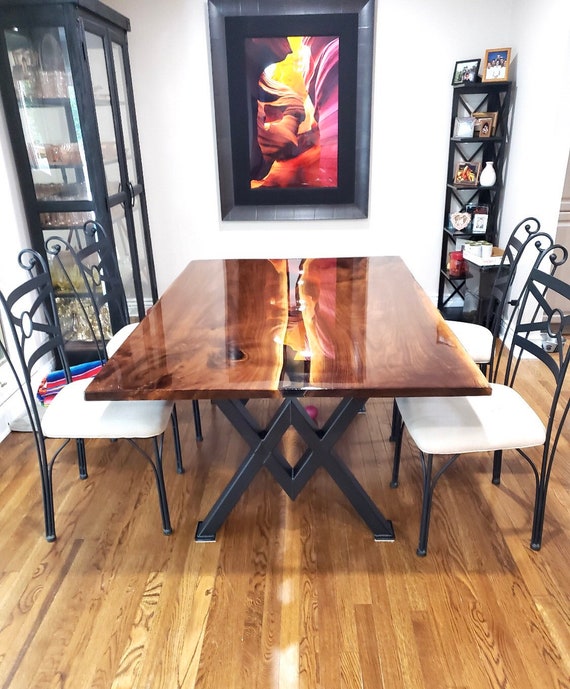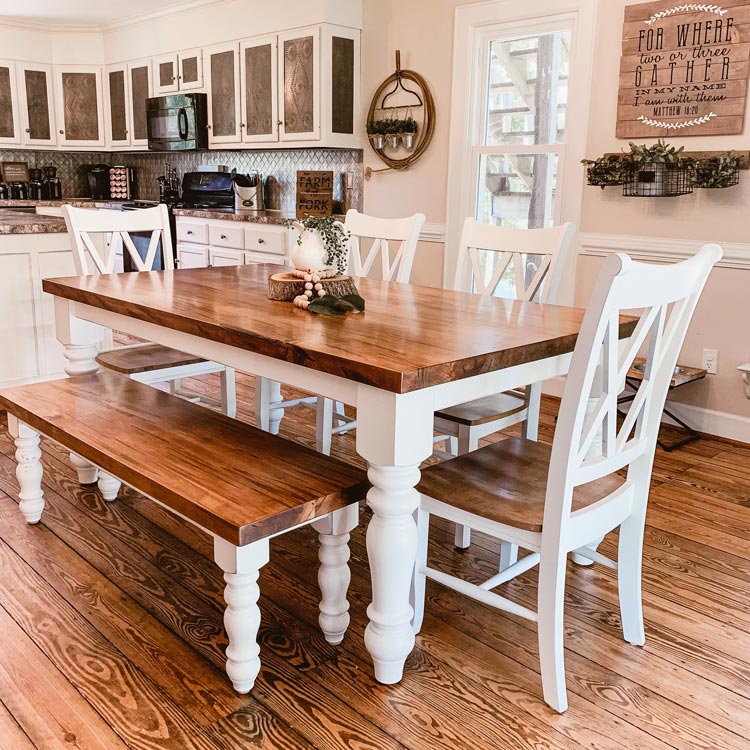From Standard to Modern: Locate the Ideal Dining-room Table Legs for Your Design
While timeless layouts such as cabriole and transformed legs evoke a sense of classic refinement, contemporary styles like hairpin and geometric choices offer a possibility for striking visual rate of interest. As you consider these elements, the question remains: how can you perfectly integrate these varied leg styles to produce a harmonious dining experience?
Understanding Table Leg Styles
The selection of eating room table leg styles can dramatically influence both the looks and functionality of the area. Each leg style contributes distinct useful features and aesthetic elements, catering to varied design choices and use requirements. Comprehending these styles is important for choosing the ideal table that aligns with your general indoor layout vision.
For instance, tapered legs use a clean, traditional appearance that can improve a space's elegance, while pedestal bases provide stability and take full advantage of legroom, making them ideal for smaller sized spaces. Hairpin legs, a characteristic of mid-century modern design, present an industrial style, permitting an airy, open feeling. Trestle legs stimulate rustic appeal, supplying durable assistance and a sense of eternity.
Additionally, the option of materials plays a significant duty. Wooden legs can bring warmth and appearance, whereas steel alternatives typically convey a sleek, contemporary ambiance. Inevitably, understanding table leg styles is important for producing a natural dining area that mirrors personal design while making certain functionality and comfort. By attentively considering these aspects, you can boost both the useful and aesthetic charm of your eating room.
Standard Table Leg Options
When selecting eating space table legs, traditional choices often embody timeless beauty and workmanship. These styles show a rich heritage and a commitment to quality, making them ideal for those that value timeless appearances.
Among one of the most renowned traditional leg styles is the cabriole leg, defined by its elegant rounded form. This design commonly includes decorative makings and is most frequently discovered in Queen Anne and Chippendale furnishings. An additional preferred choice is the transformed leg, which boasts a collection of smooth, rounded forms that supply a timeless appearance while maintaining security.
Additionally, the straight leg, while easy, supplies a unadorned and sturdy framework that can mix perfectly with a range of tabletop designs. For those attracted to ornate detailing, claw-and-ball feet legs evoke a sense of splendour and can act as a spectacular centerpiece in any type of eating room.
Lastly, pedestal bases, although not strictly legs, offer an alternate typical alternative that enables for enough legroom and can be beautifully carved. Each of these typical leg styles adds to the general setting of an eating space, weding function with visual appeal.

Modern Table Leg Designs
Modern table leg layouts offer a varied variety of designs that stress cutting-edge materials and tidy lines. These layouts often focus on capability while functioning as striking centerpieces within an eating room. Minimal looks are prevalent, with legs crafted from materials such as metal, glass, and crafted timber, which websites add to a contemporary and airy feel.
One prominent layout is the barrette leg, characterized by its slender, conical framework that supplies stability without overwhelming the table top (dining room table legs). This style is commonly discovered in mid-century modern furniture and can effortlessly complement different dining table forms. Another trend is making use of geometric forms, where legs might handle unbalanced or angular kinds, site web including visual passion and a touch of creativity

Blending Styles for One-of-a-kind Spaces
Often, home owners look for to produce special eating spaces that mirror their personal style by mixing various layout elements. This strategy permits the consolidation of diverse aesthetic appeals, causing an unified yet unique atmosphere. For example, matching a rustic wood table with smooth, modern steel legs can produce an appealing contrast that boosts the room's overall charm.
Furthermore, incorporating vintage table legs with modern table tops can stimulate a sense of background while keeping a contemporary sensibility. Such combinations not only display private preference but also urge imagination, allowing homeowners to curate a room that really feels both individual and inviting.
Color plays a vital duty in this mixing process; choosing table legs that enhance or comparison with the existing color scheme can boost aesthetic interest. As an example, whitewashed legs can soften the daring of a dark table surface area, developing a balanced visual.
Tips for Choosing the Right Legs
Picking the right table legs is essential for achieving both capability and visual charm in your eating room. Begin by considering the total style of home your area. Conventional setups take advantage of legs that feature detailed makings or turned layouts, while modern rooms may require smooth, minimal designs.
Following, evaluate the height and security of the legs. dining room table legs. Typical eating tables vary in between 28 to 30 inches in height, so ensure the legs enhance this measurement for comfort. In addition, durable materials, such as wood or steel, can boost stability and longevity
Assess the leg shape too-- choices consist of straight, tapered, or pedestal styles. Straight legs offer a timeless appearance, while conical legs can add a touch of elegance. Pedestal bases offer adequate legroom and are ideal for smaller sized areas.
Verdict
In summary, picking the excellent eating space table legs needs careful factor to consider of both modern and conventional designs. Typical alternatives such as cabriole and transformed legs offer timeless style, while contemporary styles like barrette and geometric shapes give a contemporary touch. By integrating leg design, height, and material with the general design, a natural and welcoming ambience can be accomplished. Ultimately, the picked table legs ought to reflect the desired aesthetic, improving the eating experience within the room.
The variety of eating area table leg styles can substantially influence both the appearances and capability of the room. Ultimately, comprehending table leg styles is essential for producing a natural eating area that reflects personal design while making certain practicality and convenience.One of the most legendary traditional leg designs is the cabriole leg, identified by its graceful curved shape. Straight legs provide a timeless look, while conical legs can include a touch of style.In summary, picking the ideal dining area table legs needs cautious factor to consider of both contemporary and standard styles.